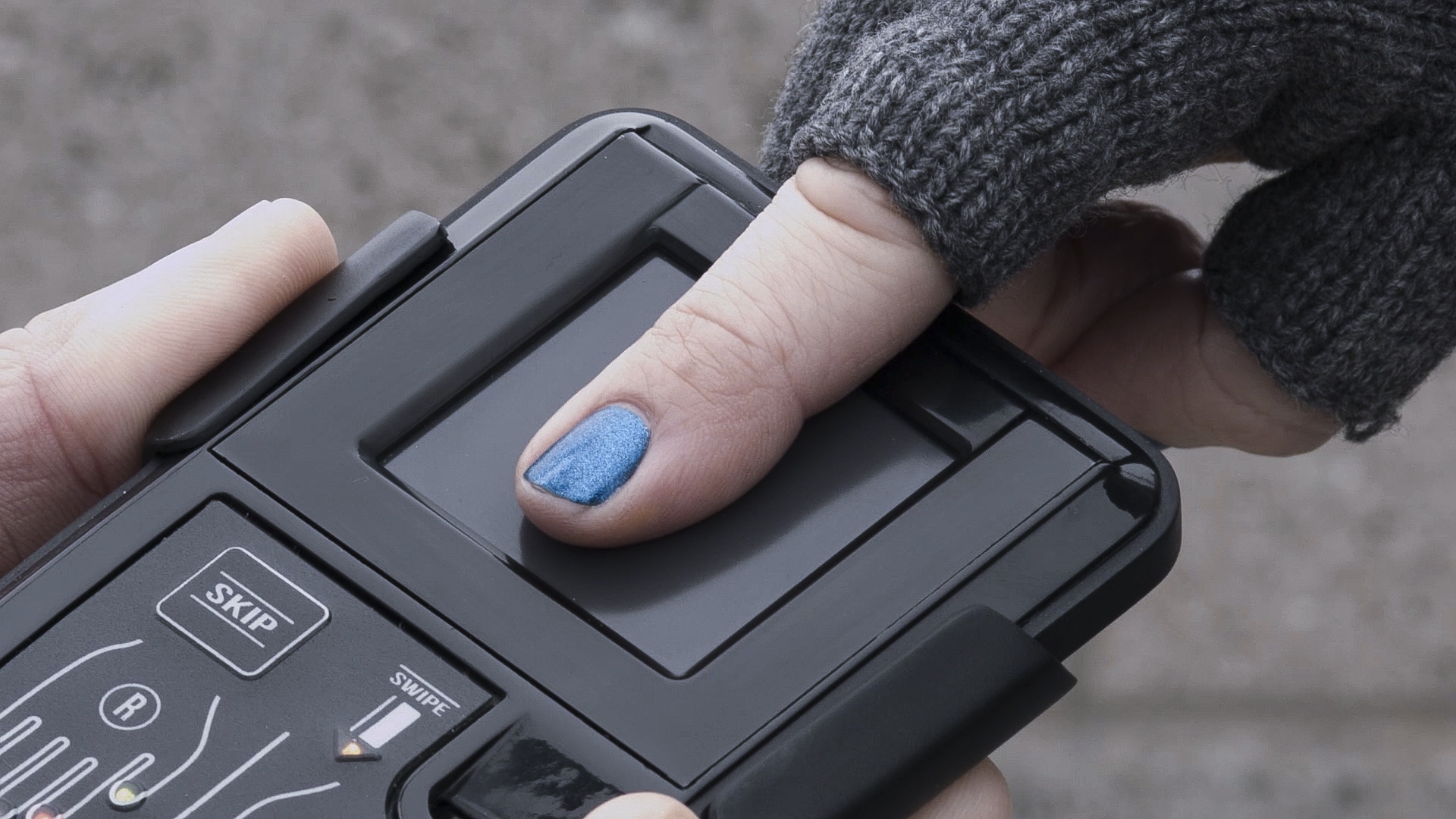Biometric verification of voters against the Aadhaar database was part of the mandated process for voting in Bihar’s panchayat elections held in September last year, Vikash Kumar Sinha, the IT-in-charge at the Bihar State Election Commission (SEC) told MediaNama.
But, it appears that the Bihar SEC carried out the biometric verification on legally shaky grounds. Lawyer Vrinda Bhandari argued that it was in violation of the landmark Puttaswamy judgement which laid down the tests of legality (a check for legal backing) and necessity (a check on if there are no other, less-restrictive means to achieve the same ends).
“The ECI already does verification through the voter cards so the biometric verification is beyond the scope,” she said, about the SEC’s powers related to conducting local elections. The Supreme Court has also ruled that Aadhaar-based verification can only be mandated when it is backed by law, for a public distribution system service, or under an amendment to Section 139(A)(A) of the Income Tax Act (which allows PAN-Aadhaar linage) – neither of which are fulfilled, Bhandari said. “The SEC can do this but they have to pass a law for it first,” she added.
Elections are central to democracies and any legal missteps at the polls can have huge repercussions.
How was biometric verification of each voter carried out?
After a voters’ photo ID was reviewed and it was confirmed that their name was part of the electoral rolls, the voter would have to undergo fingerprint scanning for biometric verification, according to Sinha.
Here are the steps that were taken by the Bihar SEC in its attempt to make the system fool-proof:
- Officials were provided with tablets to conduct the biometric scanning and verification and were advised to keep them fully charged but also provided with generators in case of power cuts.
- A phone app was created for biometric verification as a back up to the tablets
- While officials were encouraged to use mobile hotspots in case the internet failed, the system was equipped to conduct the verification offline in case of internet issues.
Meanwhile, the SEC monitored the voter metrics virtually via a dashboard. While the biometric verification system could conduct verifications offline, Sinha said that it would pause syncing with the SEC’s dashboard in case internet connectivity was disrupted but then update it once connectivity was restored. The system for biometric verification was installed in each polling booth in the State, Sinha added.
The SEC’s IT department received authorisation from the central government to conduct the verification against the Aadhaar biometric database, Sinha said. MediaNama reached out to Bihar State Election Commissioner Dr. Deepak Prasad for a copy of the correspondence that conveyed the authorisation, details of the number of people who were not allowed to vote following the biometric verification and the system’s accuracy. We will update this post if a response is received.
Fraud reported after biometric verification in elections
During the ninth phase of the 11 phase-election, voters in multiple districts found that large sums of money – up to Rs 40,000 – were missing from their accounts shortly after voting, The Hindustan Times reported.
CSC official deployed at polling booths take part in bank fraud: In Munger district of Bihar, at least 12 voters noticed withdrawals between Rs 5,000 to 10,000 soon after they cast their vote. This turned out to be the work of a CSC (Common Service Centres where people can get their ration delivery, and other services) agent who was roped in to conduct biometric verification of voters secretly and got the victims to scan their fingerprints twice – once on his phone and the next on the device for voter verification. the report said.
Meanwhile, in Purnea district, 30 voters noticed withdrawals of Rs 30,000 to Rs 40,000 soon after voting. Agents from a micro-financing company had carried out transactions in this instance after getting fingerprints from CSC officials, the report said.
“The bank accounts of villagers could be assessed by the agents working at the CSC (also known as cash, sale point) by getting a thumb impression and Aadhaar Card details easily. Fraudulent withdrawal of money is possible as the personnel have access to login IDs and also get OTP (one–time password) on behalf of the account holders, as told by those in the know of the functioning of the CSCs. For the biometric system used in panchayat polls, thousands of agents working at the CSCs across Bihar at the village level had been roped in” – HT report
Bihar State Election Commissioner calls it a conspiracy: It is not apparent if the second incident was due to mishaps with the SEC’s voting mechanism, Dr. Prasad is quoted as saying in the report. The first incident was an isolated one that took place because of one person’s ulterior motives, he said. Prasad was also quoted in the report questioning the source of these complaints, saying:
“I cannot deny the possibility of a conspiracy in the works to defame the biometric system of voters verification because it has brought in transparency in the voting system and also checked bogus voting. On average, 12,000 to 15,000 persons have been caught trying to put bogus vote during the 10-phase election so far,” Prasad said.
The SEC official told MediaNama that the CSC agent thereafter was not allowed to be a part of the voting process and the incident was an isolated one.
Bihar gives impetus to elections in other states
The biometric verification and the use of OCR (Optical Character Recognition) technology in Bihar may already be influencing other states:
- Multiple election commissioners visited booths: SECs from Jharkhand, Andaman and Nicobar Islands, Delhi, etc., visited polling booths and caught live demonstrations of the biometric system in Bihar.
- Jharkhand asked for vendor details: Jharkhand’s State Election Commission has already written to the Bihar government asking for details of the vendors contracted for the biometric system, Atul Rai, CEO of Staqu, told MediaNama. Staqu is the company that provided the OCR technology used in the Bihar elections,
- Delhi and Chandigarh’s election commissioner expressed interest: Delhi and Chandigarh’s Election Commissioner S.K. Srivastava had made public statements expressing interest in replicating the system in the upcoming municipal elections. But at a recent meeting attended by Staqu, Srivastava said that he could not include features replicating Bihar’s system in the tender as he did not have the time for it, Rai said. “Let’s see, they may add it in the corrigendum,” Rai told MediaNama – this may be possible given the delay in conducting the elections due to a proposal to merge Delhi’s three municipalities.
Meanwhile, the procurement of IT Systems for conducting elections has begun in other ways. Last month, it was reported that the Election Commission of India (ECI) had contacted government-owned Telecom Consultants of India Limited (TCIL) expressing interest in procuring a ‘video analytics’ system to profile voters and detect anti-social elements.
A tender floated by TCIL seeks a webcasting solution that will be assessed for its ability to conduct or even integrate with “video analytics such as facial recognition, gender analysis, footfall analysis”. “The said tender is floated for empanelment of agencies with TCIL to explore the future business opportunities in the field of CCTV & Webcasting services for election monitoring. To date, there is no end client. For this tender, technical evaluation is under process,” Sudhir Choudhary, Manager of the e-Gov department at TCIL, said.
The ECI had wanted to do a Proof of Concept for the video analytics system during one of the state assembly elections but it did not happen, TCIL chairman Sanjeev Kumar revealed in an earlier interview with MediaNama.
MediaNama has reached out to ECI to know why the PoC didn’t pan out and will update the post if a response is received.
This post is released under a CC-BY-SA 4.0 license. Please feel free to republish on your site, with attribution and a link. Adaptation and rewriting, though allowed, should be true to the original.
What will be the future of biometrics in India?
Do you want to keep track of biometrics and digital identity projects in India but don’t have the time? Relying on scattered content from across the web makes it feel harder than it needs to be.
Subscribe to MediaNama and get crisp, timely updates on tech policy developments in India and across the world.
Update, 31 March: The story was updated to add Section 139 (A) (A) in Vrinda Bhandari’s comment.An earlier version of the story said Section 39. The error is regretted.
Also Read:
- ECI looking to use AI for monitoring voters at poll booths: What could go wrong?
- Put an end to Facebook’s interference in Indian elections: Sonia Gandhi
- Election Commission wants a system that analyses voter behaviour at poll booths: Report
Have something to add? Subscribe to MediaNama here and post your comment.






























